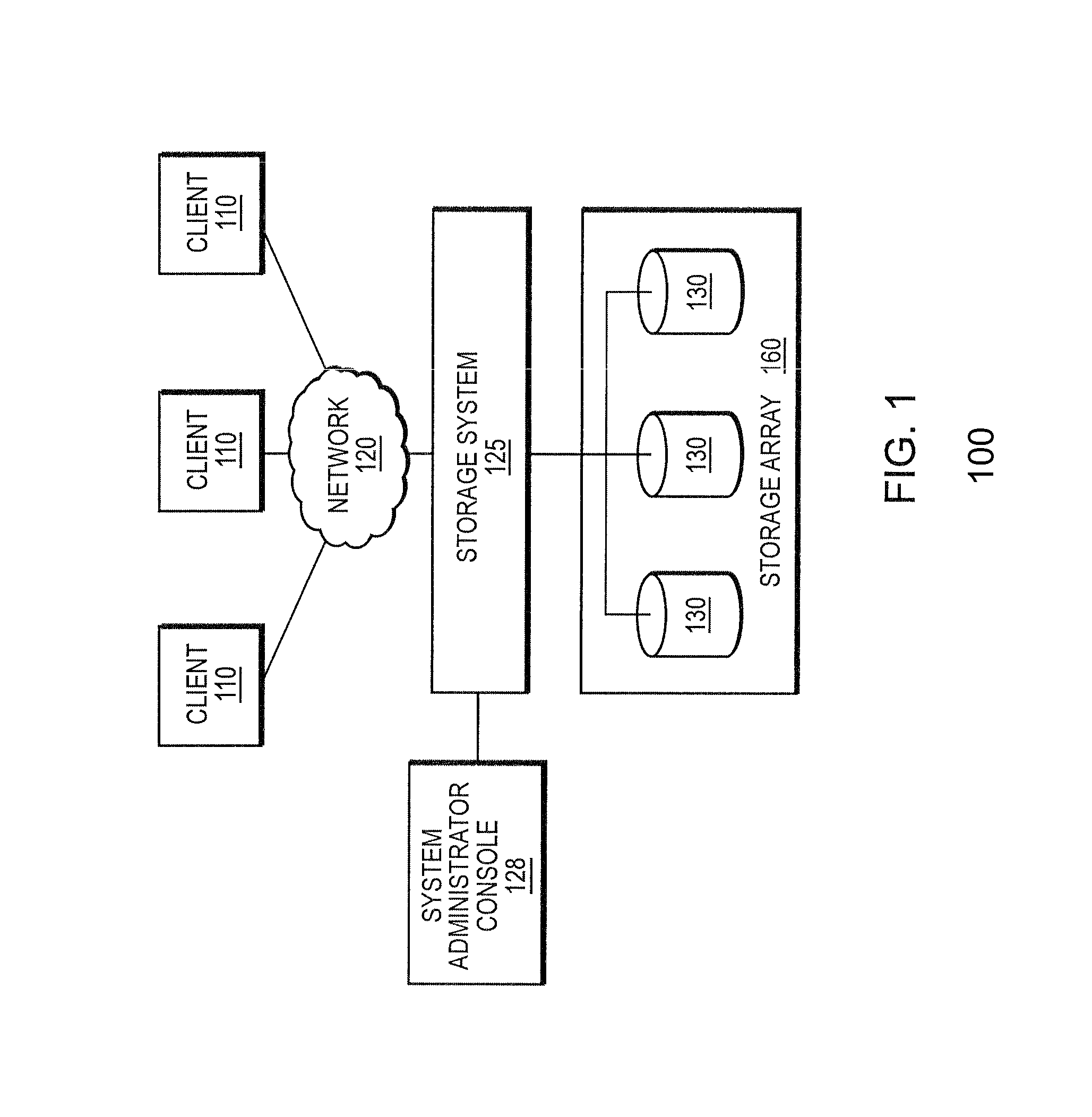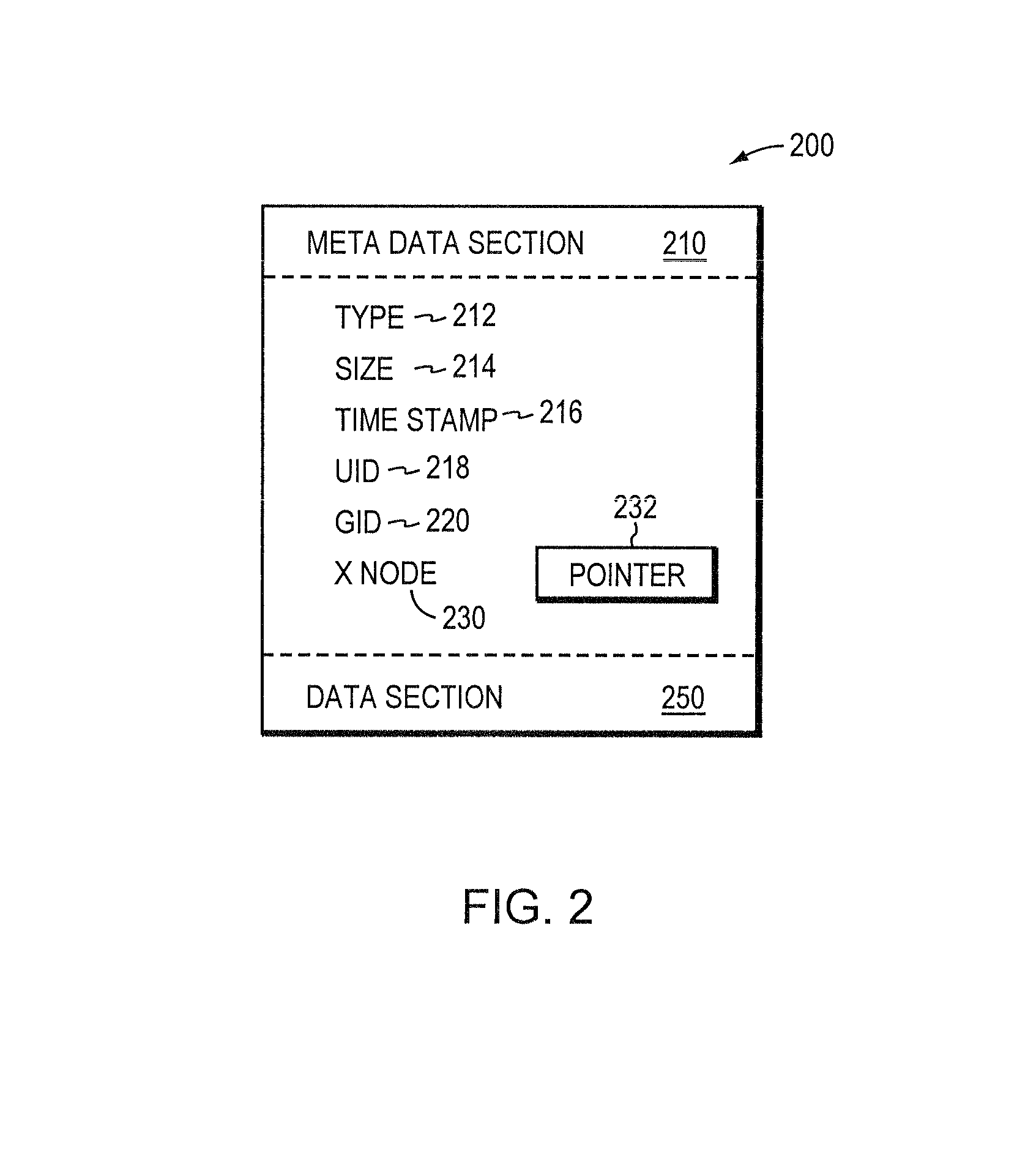Two-dimensional indexes for quick multiple attribute search in a catalog system
a catalog system and multiple attribute technology, applied in the field of search indexes, can solve the problems of inefficiency of both approaches, inability to take advantage of the combined selectivity of multiple predicates in a query, and difficulty in searching attributes in a timely fashion, so as to reduce the number of computations
- Summary
- Abstract
- Description
- Claims
- Application Information
AI Technical Summary
Benefits of technology
Problems solved by technology
Method used
Image
Examples
Embodiment Construction
System Environment
[0022]FIG. 1 is a schematic block diagram of storage system environment 100 that may be used with the present invention. The storage system environment 100 comprises one or more storage systems 125 interconnected with a plurality of clients 110 via network 120. For ease of description, only one storage system is shown in FIG. 1. Storage system 125 is connected to one or more storage devices onto which data may be stored, and from which data may be obtained, as desired. The storage system 125 may be implemented in accordance with a variety of storage architectures including, but not limited to, a network-attached storage environment, a storage area network and a disk assembly directly attached to a client or host computer. The storage devices are typically disk drives organized as a disk array, wherein the term “disk” commonly describes a self-contained rotating magnetic media storage device.
[0023]In operation, the storage system 125 services data access requests fr...
PUM
 Login to View More
Login to View More Abstract
Description
Claims
Application Information
 Login to View More
Login to View More - R&D
- Intellectual Property
- Life Sciences
- Materials
- Tech Scout
- Unparalleled Data Quality
- Higher Quality Content
- 60% Fewer Hallucinations
Browse by: Latest US Patents, China's latest patents, Technical Efficacy Thesaurus, Application Domain, Technology Topic, Popular Technical Reports.
© 2025 PatSnap. All rights reserved.Legal|Privacy policy|Modern Slavery Act Transparency Statement|Sitemap|About US| Contact US: help@patsnap.com



